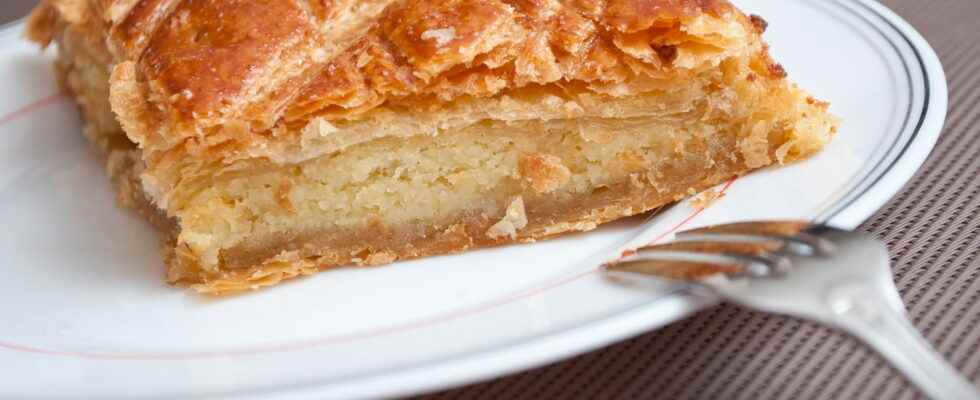EPIPHANY. Epiphany 2023 is already here! But do you have a good recipe for Galette des Rois? What ingredients do you need?
[Mis à jour le 5 janvier 2023 à 19h38] “I like the galette. Do you know how? When it’s done well… With butter in it!” Thinking of starting a little post-holiday diet? That was without counting the Epiphany! Its date: January 6, 2023. You are now condemned to make a cake for your children and grandchildren. But how to do it ? What is the best recipe? What are the ingredients to have? Is there an easy, quick and good galette recipe? Puff pastry, frangipane, sugar, butter and ground almonds… Find without further delay our recipe for galettes des Rois with frangipane on video.
The recipe for the modern Galette des Rois, with frangipane, may frighten the less adventurous in the kitchen. It is, however, one of the simplest. This is’combine a puff pastry with frangipane, in other words a mixture of pastry cream, butter, sugar and ground almonds. It’s your turn :
“Simple as a homemade galette des rois”
Before discussing the recipe for the galette des rois, you still need to know which galette des rois to choose. Nowadays, the galette made of puff pastry and frangipane seems to have imposed itself in the collective imagination. But is the authentic galette des rois frangipane, brioche or candied fruit cake? Originally, galettes des rois were simple breads in which a bean was used as a bean. But gradually, several regions have added their specificity to this flatbread.
The brioche, still in use in many regions, especially in the south of France, would therefore be the most traditional form of the galette des rois, since it is the closest to a ball of bread. In the North, but also in Provence and Languedoc, it has become the “cake of kings”, covered with sugar and candied fruit. Frangipane was born in the 17th century at the instigation of Anne of Austria and her son. Louis XIV. The puff pastry would thus have been born in Paris, so much so that it will be nicknamed “the Parisian”. Today, the galette des rois, consumed by 85% of French people, is mainly bought with frangipane (80%).
What is the date of Epiphany in 2023?
When are you going to eat galette des rois in 2023? It all depends on whether you decide to follow the custom scrupulously or not. Epiphany is traditionally fixed in the Christian calendar on January 6, ie twelve days after the birth of Jesus according to the Roman liturgy. January 6 falling regularly in the middle of the week (a Friday this year 2023) after the vows of good yeara reform however transferred the date to the second Sunday after Christmas, i.e., almost systematically, to the first Sunday from January 1. The galette des rois could therefore be cut on this date, at least in countries that do not have a public holiday dedicated to Epiphany. But rest assured, the bakeries and pastry shops won’t be stopping anytime soon, and you can taste the galette des rois this Sunday, January 8, and at least until mid-January !
In the Christian imagination, the galette des rois refers to the three Magi who, guided by a star, went to Bethlehem, to meditate in front of the manger where Jesus would have been born, offering the child precious presents. But we quickly learn, by looking into the question, that the Epiphany (or its equivalent) was already celebrated long before the advent of the Christian religion.
We first speak of a golden cake with a round shape, a description that can recall the sun and therefore the cult of Saturnalia, also linked to the solsticein winter as insummer. During these 7-day festivities, excesses were allowed and it was customary to offer cakes to those around you. A tradition which, in the Middle Ages, became that of the “cake of kings”. For some, the name would come from the fee that had to be paid to his lord at the same time. Royalty usually accompanied itself with a cake.
As for the fève, it would have preceded the galette since it also dates from the Roman Empire. It was customary in ancient Rome to draw lots for the king of a feast using a black or white token. It is also said that a king was chosen in this way from among the soldiers of a garrison or in a family during the Saturnalia and that he could thus, for one day, fulfill all his desires and command everything he wanted. liked. A legend also reports another origin of the bean: the legend of Peau d’âne, inspired by the tale of Charles Perrault. It is thus by forgetting his ring in a cake intended for the prince that Donkey Skin would have inspired this strange custom.
At last, the tradition of sending the youngest of the guests under the table to designate who gets each piece of the galette would have arrived at the same time. Still during the Saturnalia, the master of the house indeed asked the youngest of the family, supposed to be the most innocent, to designate to which guest he was to distribute the share he held in his hand. The child is then generally nicknamed Phoebe (for “Phœbus” or “Apollo”), in reference to an oracle of Apollo.
